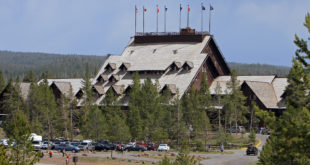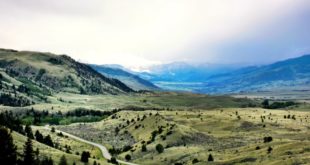Over 900 were killed after they left the Park’s North entrance, which highlights the stated reason for the slaughter: the fear that the bison will infect Montana cattle herds with brucellosis. While there’s no denying brucellosis is a serious issue — it can cause domestic cows to spontaneously abort their calves and in very rare cases be passed on to humans — the link between bison and cattle is less clear. We know Yellowstone bison carry the brucellosis virus, but so do the elk found virtually everywhere in the Yellowstone ecosystem — and in greater numbers than the bison. And there’s very little cattle grazing north of the Park.
So the solution should be simple: just let the bison roam past the northern boundaries of the Park, right? Wrong. Cattlemen make up a powerful political constituency in Montana, and although it can be argued there’s a very little chance brucellosis can be passed along from bison to cattle, there’s enough of a chance for them to demand the bison be controlled. Also, the cattlemen do have a compelling financial interest here: certification for the state as brucellosis-free is hard to acquire, and if it’s lost then all cattlemen must implement testing programs for cattle heading out of state.
A limited form of this solution is in the works, but it’s turned into a complicated issue involving local politicians, federal officials and the Montana cattle industry. The state has negotiated a deal with the Royal Teton Ranch to eliminate grazing in the area completely for $2.8 million. This would create a cattle-free zone where the bison can roam; this approach has been taken south of the Park with a successful outcome. Buying grazing rights in this instance is not cheap, but doable. But the deal has stalled because of a lack of state funding.
It should be noted this year’s exercise in bison management will end up costing federal taxpayers $3 million.
It doesn’t take an accountant to see it would have been cheaper for the federal government to pay Royal Teton Ranch to give up its grazing rights than to perform a one-time culling of the Yellowstone herds. Instead, we have a situation that will repeat annually until some sort of sane management scheme is implemented. And, indeed, as part of the negotiations over the Royal Teton Ranch grazing rights, the state did come up with what sounds to be the beginnings of a workable policy. With no issues with grazing, the state is proposing some bison be allowed out of the North Entrance to Yankee Jim Canyon via the Yellowstone River corridor. (Not without some conditions: the bisons must be certified as brucellosis-free.) A new holding facility would be built at Yankee Jim Canyon, where the bison would be held before a spring release. But the number of bison allowed out of the Park during a winter season would be 100 — a drop in the bucket to the almost 1,000 bison leaving the Park this winter and spring.
It appears the slaughter is over, at least for the time being. Yellowstone officials say bison are being rounded up and held in pens rather than going to slaughter. About 300 bison are being held at the Stephens Creek bison capture facility near Gardiner; they are also being tested for brucellosis. The reason for the change in policy? A little public outcry probably helped the shift, but the stated reason is that we’re close enough to spring — the emergence of food that will in theory keep the bison in the Park.
But the notion that thousands of bisons were killed because they crossed an imaginary line imposed by humans is still upsetting, to say the least, and one many around Yellowstone National Park would prefer not repeat annually.
 Yellowstone Insider Your Complete Guide to America's First National Park
Yellowstone Insider Your Complete Guide to America's First National Park





